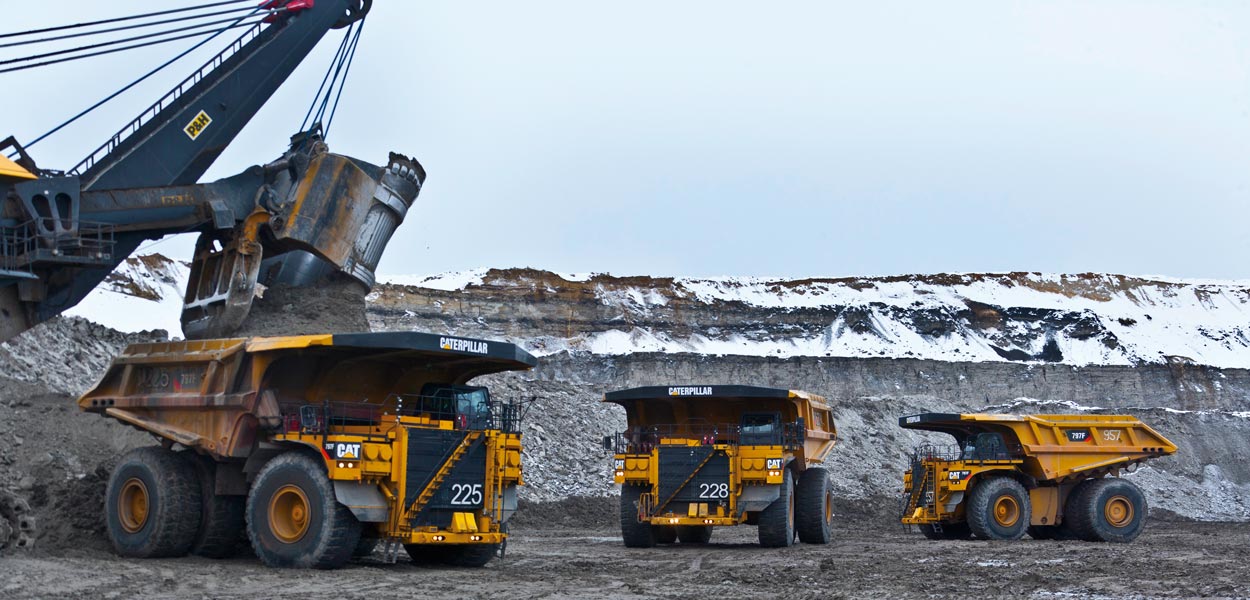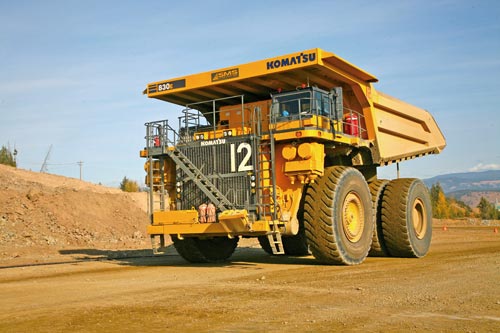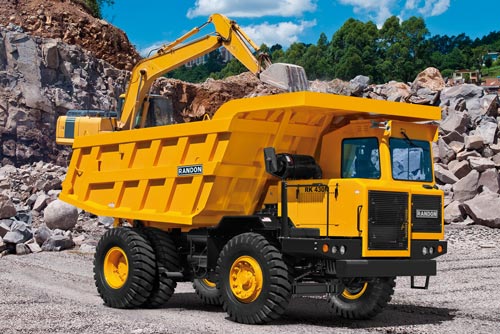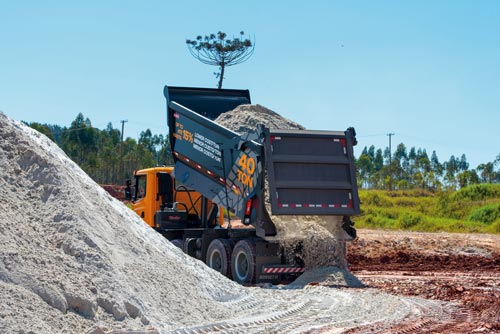TRUCKS
Combat of giants
Designed to perform the same function of transport, road trucks and OTRs have key differences in structure, durability, size and cost

Positioned in different areas of the industry, road trucks and off-the-road (OTR) dumpers were designed to carry out the same basic function: transport material from one point to another, in a way to accomplish a previously-calculated plan. Both families are used in a wide range of applications, including quarries, heavy construction, industrial applications and underground mining. Out of these fields, however, there are considerable differences between both types of equipment—starting from size, toughness, capacity and useful life of each one—not always noticed by lay observers.
According to Karine Bergamini Madureira, manager of strategic planning from Komatsu Brasil, OTRs are machines directed for removal and transport of large quantities of material in tough conditions and environments, mainly in mining operations, where the use of road models is technically and financially unfeasible. “Off-road trucks are cost-effective to do this high-volume moving, reaching up to 400 t per cycle, against 40 t of road trucks”, points the expert.

Veículos OTR dominam as operações mais severas de transporte no segmento de mineração
DIFFERENTIAL
For Miguel Gómez, consultant of load transport equipment from Caterpillar for South America, another differential of OTR trucks is their toughness. “Broadly speaking, this involves special engineering of axles, final drives, reinforced housings, special rims and other items that ensure higher durability, shorten work cycles and improve mechanical availability, generating higher profitability”, explains him.
There is also the question of useful life. It is well known that OTR trucks last much longer. “They are high-durability vehicles that may work more than 30,000 hours”, says Eduardo Dalla Nora, director of the vehicle unit from Randon Implementos. “Not less important, off-the-road vehicles have a more responsive hydraulic system that ensures higher productivity to the operation.”
In the case of OTR trucks from Komatsu, Karine Madureira assures that they may last up to 12 years. According to her, they are products with a high level of on-board technology, what allows following in real time the main indicators of maintenance, operation and even worksite conditions, providing the necessary information to ensure safe work and monitor equipment’s “health”.

Veículos OTR dominam as operações mais severas de transporte no segmento de mineração
In turn, Gómez states that Caterpillar off-the-road trucks are overcoming records of age. “It is still possible to see currently the 769—a model that started to be produced in 1962—working in several projects, with more than 50,000 operating hours”, says him. In this list, the company has a wide range of products, starting from 40-t options for small quarry areas and going to 400-t behemoths used in massive mining applications.
In the case of road trucks, sometimes inappropriately called OTR, Gómez explains that—although they may give design solutions for heavy works using transmissions and gearboxes that supply appropriate resources for some applications—these vehicles do not have the strength needed for all applications. This may cause damages in the suspension or frame, depending on service toughness. “In addition, their cycles are a little longer and their durability is lower in heavy applications”, tells him. “On average, their useful life is three to four years, equivalent to 5,000 hours.”

Competitividade de rodoviários se dá no preço de aquisição e nos custos operacionais menores
SELECTION
It is not the case of comparing, but there are situations when both types may compete, reversing the situation. “If compared to OTRs of 70 to 75 t, road trucks are much more competitive”, points Fabricio Vieira de Paula, manager of the off-the-road section from Scania Brasil. “This is mainly due not only to the buying price (it costs approximately one quarter of the OTR price) but also to its higher flexibility and lower consumption and maintenance costs.”
Due to the difference in dimensions, load capacity, operation and other items, the option between road or off-the-road trucks lays directly on their application, type of work to be carried out and traveling distance. “For closed mines and long-distance transport (above 5 km) the second is a better choice. But for open-sky operations in short distances (up to 5 km), the first is the best”, contexts Dalla Nora, from Randon.
There are still other factors that have to be considered. Many of them are related to the profile of the mine and its operating cost. Dalla Nora shows an example. To reduce costs with blasting and drilling, OTRs are cost-effective if compared to road trucks due to their reinforced structure and to a bucket that allows the transport of rocks with diameters up to 800 mm. “This reduces blasting cost and increases their agility in terms of discharging”, details the expert.

Av. Francisco Matarazzo, 404 Cj. 701/703 Água Branca - CEP 05001-000 São Paulo/SP
Telefone (11) 3662-4159
© Sobratema. A reprodução do conteúdo total ou parcial é autorizada, desde que citada a fonte. Política de privacidade












